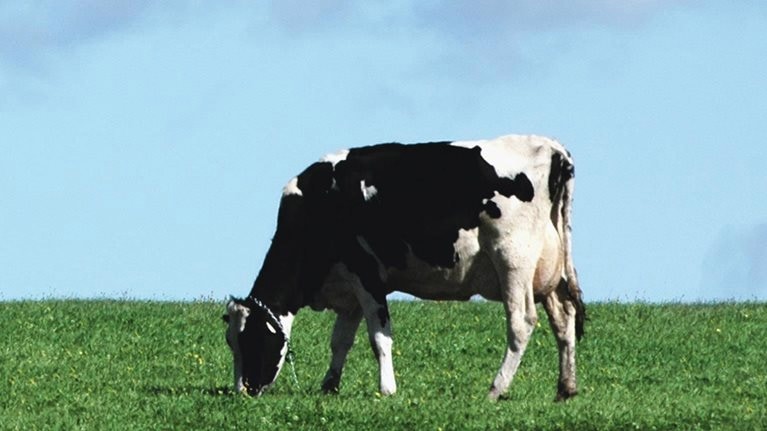In the early days and months of the COVID-19 pandemic, the dairy industry faced challenges—such as shifts in supply and demand—as food service demand fell and retail demand skyrocketed. However, the industry ultimately emerged intact thanks to adjustments such as portfolio simplification and manufacturing flexibility. What was the experience like for the dairy industry, and how do executives plan to proceed?
To answer these questions, McKinsey conducted a survey of more than 50 US dairy CEOs in the fourth quarter of 2020. These results were augmented with in-depth interviews. In the survey, we asked executives across the value chain for their feedback on how COVID-19 affected their businesses and how they’re thinking about the future of dairy. We’ve summarized the key trends and findings below and offer three recommendations to address them: expand the talent pool and ways of working, embrace a “One Health” approach, and establish flexible supply chains that can respond to unexpected disruptions. Executives who pursue these suggestions can position their companies for long-term growth.
How the US dairy industry fought pandemic headwinds
For dairy overall, 72 percent of surveyed executives reported neutral or improved margins in 2020; this generally holds across small and large (more than $1 billion in revenue) companies and across subsectors, including retail, packaged goods, food service, ingredients, processors, suppliers, and distributors. Certain product categories outperformed, driven in large part by a shift toward eating more at home: 54 percent of dairy consumers reported cooking more since the start of the pandemic. As a result, butter retail sales increased 32 percent in 2020, and fluid milk bounced back from negative growth and saw a 206 percent increase in volume sales across retail and food service in 2020, as compared with four years prior. What factors enabled some dairy companies to emerge relatively unscathed?
Operational shifts (and a bit of luck) helped mitigate supply challenges
Executives may recall empty dairy shelves during the first two months of the pandemic, juxtaposed against images of US dairy farmers pouring out tanks of milk. Dairy Farmers of America estimated that “milk dumping” produced up to 3.7 million gallons of waste a day in April 2020.1 This supply-and-demand mismatch early on was created by an abrupt shift in demand, from food service to retail. Many producers and co-ops, locked into food service supply contracts, were left without an outlet, while many manufacturers had food service–specific production facilities that were unable to shift seamlessly toward retail. This abrupt shift of the dairy market from food service to retail overwhelmed distribution warehousing and logistics in the short run, further disrupting the dairy supply chain.
While nearly all dairy companies struggled to adjust to the new normal during the early stages of the pandemic, most capitalized on increased retail demand through inherent or reactive operational flexibility. The following four factors contributed to their success:
- Manufacturing and channel flexibility. Seventy-three percent of dairy executives reported being able to shift production from food service to retail between March and April 2020, a move mostly dependent on the preexisting position of plants. Processors interviewed in October 2020 communicated a feeling of luck that their plants were interchangeable or that excess capacity in retail plants allowed them to meet the swell in demand. One CEO said, “We inadvertently had the right system for the crisis and were able to pivot manufacturing from food service to retail by flexing our plants.” This highlights the value of flexibility and how systems could benefit from such adaptability in the future.
- Collaboration across the value chain. Dairy executives referred to the unprecedented collaboration and communication required to address supply-chain disruptions. Producers, processors, packagers, distributors, and retailers coordinated among themselves, as well as with local and state authorities, to ensure products reached shelves. According to one executive, “Constant communication and give-and-takes within our supply network allowed us to quickly adapt our products and get them to consumers.”
- Simplification. SKU rationalization characterized much of the crisis. To meet increased demand and competition for space in distribution and retail networks, companies moved away from a historic focus on variety and moved toward the basics. In the words of one executive, “We’re just offering chocolate, vanilla, and strawberry ice cream, given [retail] real estate constraints—and consumers are happy with that!” Forty-one percent of processors interviewed reported pursuing SKU rationalization, especially in the short term—but some have plans to also streamline their portfolios in an ongoing way.
- Adaptation to remote work for employees not on the front line. While executives communicated the challenges of remote work, they also appreciated important silver linings. Most notably, remote work has widened the talent pool by loosening geographic constraints and opening opportunities in areas that typically present a challenge for the industry, such as engineering support roles. One executive said, “We’ve struggled with talent in the past but are now able to look at a broader set of candidates.”
Would you like to learn more about our Agriculture Practice?
What executives think about the future
Survey respondents are optimistic about future growth and recovery from the pandemic. In fact, 84 percent expect annual revenue growth of at least 3 percent over the next three years, and most expect favorable growth on volume and margins (Exhibit 1). This optimism is likely driven in part by the 70 percent of executives who believe the negative impact of COVID-19 will subside during 2021.

However, three uncertainties are top of mind for executives: shifting consumer preferences, the changing landscape of retailers and channels, and finding new ways to use technology. Agility is key to addressing these issues.
Shifting consumer preferences
Dairy executives are 15 percentage points less confident in their ability to identify consumer trends today than they were in 2019: 28 percent in 2020 versus 43 percent in 2019. Nonetheless, 66 percent of executives report increasing their level of investment in innovation, with a particular focus on sustainability, health and wellness, and convenience; 56 percent report dedicating resources to sustainable packaging, and 52 percent plan to launch protein-enriched or pre- or probiotic products in 2021. Executives continue to focus on nondairy alternatives, which are generally perceived by consumers as healthier and more environmentally sustainable (representing strong drivers for the nearly 50 percent of consumers who purchased dairy alternatives during the pandemic); 30 percent of CEOs report interest in adding plant-based products to their product portfolio. Also, 29 percent of executives are investing in packaging that extends a product’s shelf life, a convenience consideration for consumers looking for at-home stocking options.
Changing landscape of retailers and channels
Dairy executives recognize that shifts toward e-commerce may endure, and they are investing accordingly. Despite concerns over smaller margins, 67 percent of CEOs report they are investing in e-commerce. Examples include taking steps to strengthen their partnerships with retailers to better coordinate online marketing, investing in online platforms, and innovating packaging for optimal last-mile delivery.
Finding new ways to use technology
Technology and digital and analytics enable dairy executives to make improvements in important areas such as supply and demand planning, operational efficiencies, and customer engagement and insights. In fact, two-thirds of surveyed executives report using robotics and automation to reduce manual work in plants. In addition, 30 percent of respondents report using predictive analytics for forecast-based planning, and 34 percent use technologies that address end-to-end value-chain visibility, planning, and control (Exhibit 2).

But CEOs believe more can be done: only 2 percent reported having “very strong” digital and analytics capabilities, and only 16 percent believe they are optimally and regularly processing data to generate meaningful insights.
As a result, 80 percent of CEOs report that they plan to deploy new digital and data-analytics tools within the next one to two years, mainly focusing on manufacturing and logistics. In addition, 63 percent of executives report plans to invest in marketing and sales, implying a desire to prioritize strengthening consumer-insight capabilities (Exhibit 3).

What is most important to US dairy CEOs?
During one-on-one interviews, we posed questions aimed at uncovering the key themes on the minds of dairy executives. As in 2019, themes that are top of mind consistently include risk and volatility, consumer insights, and evolving behavior (especially of millennials). The difference in 2020 was an overall sense of optimism and a shift toward embracing ideas previously perceived as threats, such as an increased focus on the environment. For instance, some dairy companies are embracing the consumer and market interest in the environment by pursuing initiatives such as regenerative agriculture programs.2
What keeps dairy executives up at night
- Health and safety. Consistent with prior years, food safety is top of mind for executives. Furthermore, at the end of 2020, executives cited employee health and safety as a number-one concern, driven in part by COVID-19.
- Risk and volatility. Executives are concerned about volatility and the big unknowns regarding financial and regulatory pressures, especially given a new US political administration.3
- Changing consumer preferences. Consistent with their reported decreasing confidence in understanding consumers, CEOs say they are concerned about keeping pace with frequently shifting consumer preferences.
What dairy executives are most excited about
- Innovation. Despite the pandemic-driven return to basics, executives anticipate gearing back up to diversify their portfolios.
- Renewed consumer focus on dairy. Buoyed by the return of dairy during the crisis, executives hope to see a sustained interest across categories. They are especially optimistic about health- and wellness-centric products.
- Missions. CEOs are increasingly focused on social-welfare initiatives, especially around environmental sustainability. Company culture and identity also emerged as more critical today, given disconnected work environments and the importance of keeping employees engaged.
Dairy CEOs appear energized and prepared to lead the industry toward a customer-centric postpandemic future.
Paving the path ahead
Here are a few important takeaways from the pandemic for dairy executives:
Expand the talent pool and ways of working
Where remote work is possible, dairy executives should consider seeking talent beyond traditional geographic constraints. Employers can assess the degree of in-person interaction necessary for a non-factory-based role, for instance, to decide whether the person in that position could work remotely. Several high-tech companies are leading the way by offering to remove the requirement for workers to show up on-site.
Embrace a One Health approach
A One Health approach encourages cross-sectoral and cross-disciplinary collaboration at local, regional, national, and global levels to support the health of humans, animals, and the environment. To advance this goal, executives could pursue two actions:
- Identify evidence-based positions on dairy’s role in public health
- Build cross-sectoral, public health–focused partnerships—for example, with other animal-derived food-industry groups, public health institutions, and academia—to address priorities such as environmental sustainability, health and wellness, food security, food safety, and antimicrobial resistance
Establish flexible supply chains
The year 2020 proved the value of resilient and flexible supply chains for companies that had made the efforts to build them. The next phase will couple active monitoring of the supply chain to anticipate disruption with the implementation of flexible formulas—for example, the ability to produce with different components offering similar functions.
Dairy executives are optimistic about the future of their industry, but they have to translate that optimism into action. Regardless of company type, size, or complexity, future success depends on their ability to achieve clarity on strategic priorities—as well as on the systems to support agile execution.


